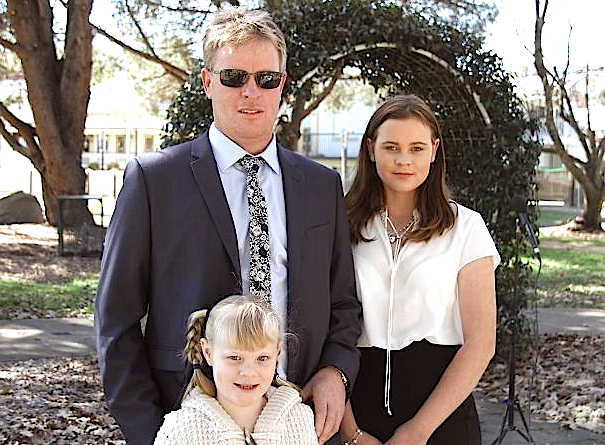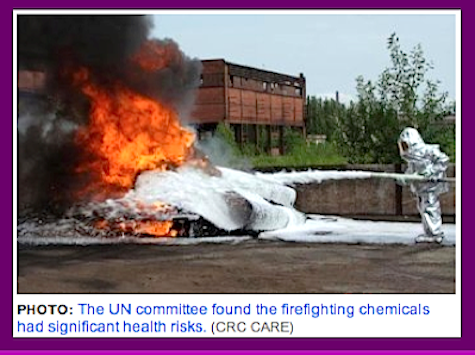Home / Perfluoroctanoic acid (PFOA) [Fluoride] ABC NEWS
It has rendered some farm land unusable,
property values have plummeted,
and residents have been unable
to drink their bore water.

Federal Government should use toxic firefighting foam research completed by US, lawyer says …
Updated 26 Sep 2016, 12:50pm
The Australian Government is wasting time and money by failing to acknowledge US studies into a toxic foam chemical, a US lawyer who led a class action against the makers of the toxin has said.
The chemical perfluorooctanoic acid (PFOA) was in a firefighting foam that has leeched into groundwater beneath at least 30 Australian Defence bases,
including the Oakey Aviation Base on the Darling Downs.
It has rendered some farm land unusable, property values have plummeted, and residents have been unable to drink their bore water.
The same chemical was contained in Teflon and found in a West Virginian town water supply the late 1990s, sparking legal action against Teflon manufacturer DuPont, and eventually won a $US70 million settlement for almost 70,000 people who might have been exposed to the contaminated water.
Kentucky-based lawyer Robert Bilott brought the class action on behalf of the residents and said he had been watching Australia’s response to the growing contamination issue with interest.
“A lot of time and a lot of resources can be saved by the fact that a lot of this very complicated and expensive research has already been done,” Mr Bilott said.
“I think it would be important to take advantage of the data that already exists so it’s not a delayed response to folks who are drinking this.”
Six diseases linked to PFOA: US study finds
The Australian Defence Department maintains there is no strong links between PFOA and serious human health effects.
Queensland Health advice said adverse health effects had been found in animals but not in humans.
But as part of the US class action, an independent scientific panel spent more than $US30 million studying the chemical and its human health effects.
“One of the things that was remarkable about it was they ended up getting blood data from 69,000 people in that community,” Mr Bilott said.
“They ended up concluding that there was six disease linked to drinking this chemical in your water for over a year and that was kidney cancer, testicular cancer, ulcerative colitis, thyroid disease, preeclampsia and high cholesterol.
“And that data is out there.”
Mr Bilott also raised concerns about Australia’s drinking guidelines for the chemical.
An independent review by a toxicologist released earlier this month found Australia should maintain its standards for the chemical, despite a decision by the United States Environment Protection Agency to dramatically lower what it considered safe.
“It’s the same chemical, it’s the same science and it’s the same knowledge, so I’m not quite sure why there would be any distinction,” Mr Bilott said.
A frequently asked questions document on the Defence Department website said the United States health study could not be used in Australia.
“The findings of this health study could have been impacted by many location- and population-specific factors [for example, routes of exposure, background conditions and lifestyle factors], which cannot necessarily be translated to the Oakey community,” the document read.
“In addition, many factors can influence a person’s health and therefore it is challenging to link a person’s health issue unequivocally to PFOS [perfluorooctane sulfonate] and PFOA exposure.”
The Federal Government is undertaking its own epidemiological study of the human health effects of the PFOA chemical.
More on this story:













